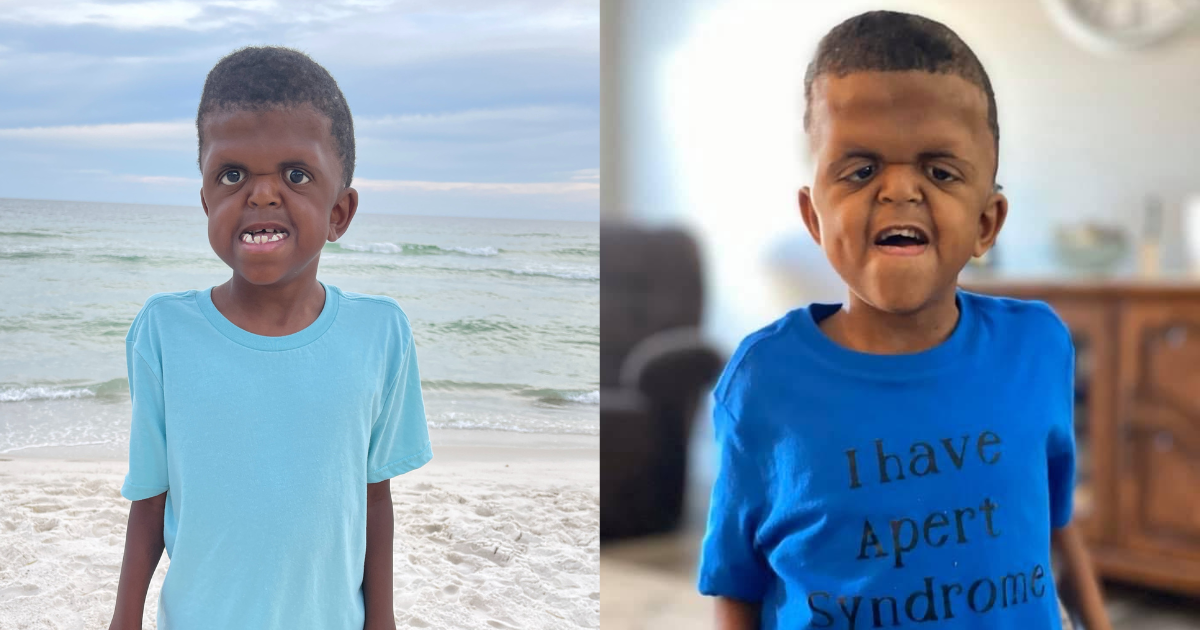
I had never heard of Apert syndrome until the day my best friend shared with me that she and her husband were adopting a little boy with the condition. Trae, who is now my godson, is an energetic, smart 9-year-old boy who likes gaming and playing with his friends. He’s a TikTok expert and has no qualms about grabbing his mom’s phone to post another cute video.
Tom and Jackie Bruns have seven children. (Yes, seven!) The St. Louis area family includes Liz, 33, Dylan, 27, Mackenzie, in heaven, Sky, 18, Jada, 16, Eli, 12, and Trae. They also have two grandchildren. The Brunses are a multiracial family built by biology and adoption.
When Jackie first told me about Trae, she, like me, didn’t know anything about Apert syndrome. She and her husband did online research to begin to understand Trae and his needs. Trae was also premature. Jackie is a registered nurse, and she also has extensive experience taking care of medically complex children. She told me she knew that she and Tom would be great parents to Trae.
Apert syndrome, according to the Cleveland Clinic, is rare
Only one in every 65,000 children is born with the condition. This is why most of us have never heard of it. Apert syndrome is “caused by a genetic mutation that occurs early in the pregnancy.” The child “is born with physical abnormalities because joins in their skull close too early.” They go on to say that certain body areas, including the skull, face, feet, and hands (particularly webbed fingers and toes) make the condition obvious.
Children with Apert syndrome often have significant and ongoing issues. As the Bruns discovered, physical issues include dental, vision, breathing, developmental milestones (like walking), speech, sleep, hearing, seizures, and more. To date, Trae has had 42 surgeries. Additionally, children with Apert syndrome face social struggles. Their differences are apparent, and people aren’t always kind and inclusive.
Jackie shared that on multiple occasions, kids have walked right up to Trae and said, “Ew! Why do you look like that?” or said loudly, “That boy looks weird.” Trae has been called a “monster,” and kids have also pointed out that Trae’s “eyes and face look smashed.”
The family has also been subject to plenty of stares and whispers, making it challenging to go in public
However, there are also plenty of kids (and adults) who treat Trae kindly. This past summer, the family was vacationing at the beach. A little boy walked up to Trae and wanted to play with him. Jackie reports that the two boys played together for a full afternoon — boogie boarding and playing in the sand — and not once did this little boy say anything about Trae’s appearance.
Jackie says this boy got it right. Trae is a person with feelings and is a typical 9-year-old. He wants to be accepted and have fun with friends. Othering Trae is extremely hurtful.
Another struggle is the assumptions people make about Trae
For example, Jackie reports that people sometimes express that Trae isn’t smart. Yet, Trae “can read and write and do math,” just like his peers. He does need some accommodations to carry out some academic tasks — but these have nothing to do with intelligence. Trae can do most things his peers do, though sometimes he does them a bit differently.
What would the family like to see for Trae? Jackie reports that she wants “people to treat Trae as they would any other person.” Just because Trae’s physical features aren’t the same as his peers, it doesn’t mean he is without feelings. Jackie has no problem answering questions about Trae’s diagnosis, as long as the questions are asked with respect.
If your child encounters another child who is different, model for them what you would like to see
Say hi and introduce yourself and your child. Don’t shush your child who is curious about the other child. However, if their reaction is to insult — intentionally or not — you must stop that immediately.
Rather, as Jackie suggests, ask questions. Be curious instead of assuming. Get to know the child by asking how old they are, their favorite activities, etc., and find commonalities between the kids. In time and with experience, your child — and you — will learn to navigate differences, and hopefully make new friends along the way.




